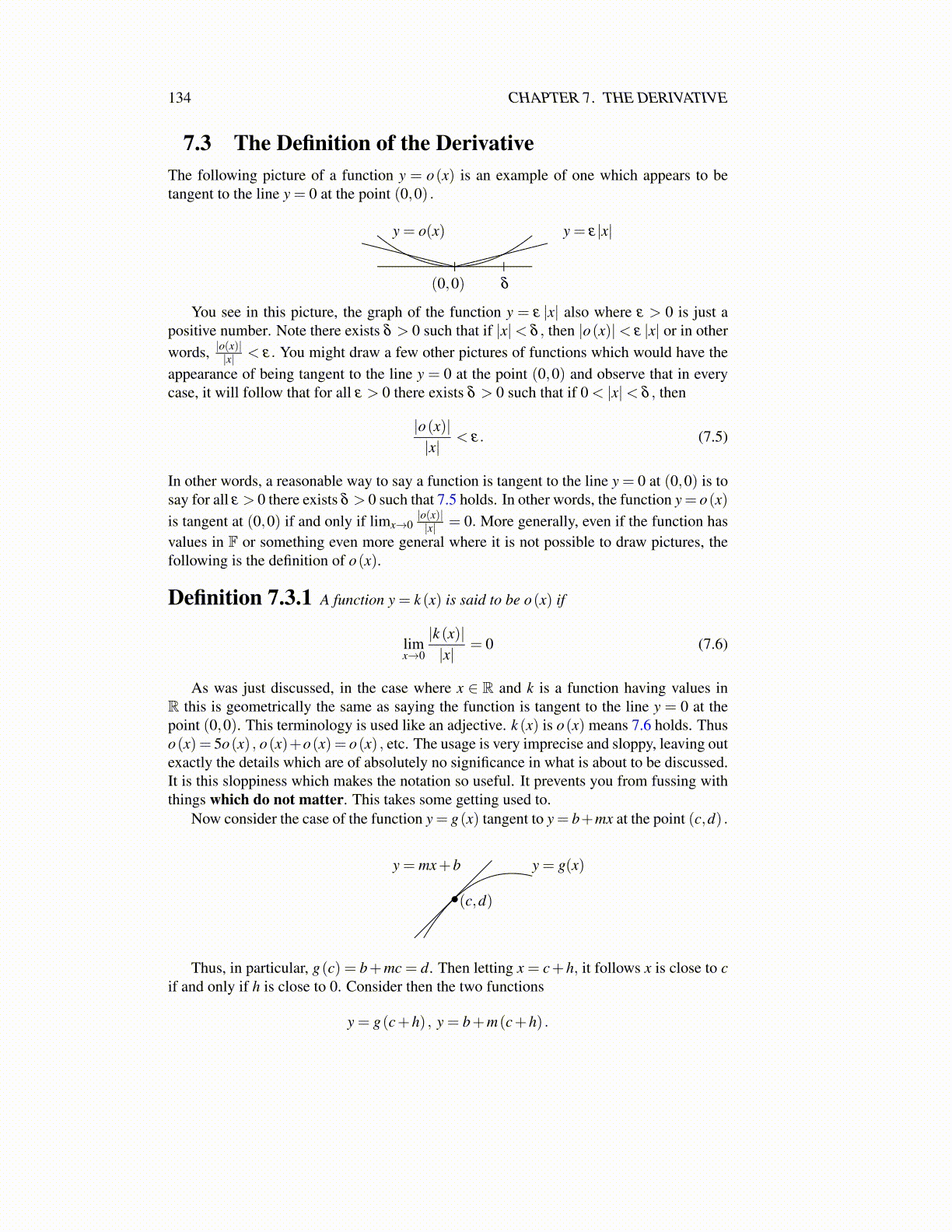
134 CHAPTER 7. THE DERIVATIVE
Proof: Suppose 7.6. Then subtracting these, (m2−m1)h = o(h)−o(h) = o(h) and sodividing by h ̸= 0 and then taking a limit as h→ 0 gives m2−m1 = limh→0
o(h)h = 0. Note
the same argument holds for derivatives from the right or the left also.
Observation 7.3.5 The familiar formula from calculus applies.
g′ (x) = limh→0
g(x+h)−g(x)h
This is because the right side is
limh→0
g′ (x)h+o(h)h
= g′ (x) .
So why am I fussing with little o notation? It is because functions of variables notin R must also be considered, although not so much in this book, but in this setting, youmust do something like what I have just been discussing in this special case and in fact,the above definition continues to apply with no change in all situations while geometricnotions involving “slope” don’t.
Now the derivative has been defined, here are some properties.
Lemma 7.3.6 Suppose g′ (c) exists. Then there exists δ > 0 such that if |h|< δ ,
|g(c+h)−g(c)|<(∣∣g′ (c)∣∣+1
)|h| (7.7)
o(|g(c+h)−g(c)|) = o(h) (7.8)
g is continuous at c.
Proof: This follows from the definition of g′ (c) .
(g(c+h)−g(c))−g′ (c)h = o(h)
and so there exists δ > 0 such that if 0 < |h|< δ ,
|(g(c+h)−g(c))−g′ (c)h||h|
< 1
By the triangle inequality,
|g(c+h)−g(c)|−∣∣g′ (c)h
∣∣≤ ∣∣(g(c+h)−g(c))−g′ (c)h∣∣< |h|
and so|g(c+h)−g(c)|<
(∣∣g′ (c)∣∣+1)|h|
Next consider the second claim. By definition of the little o notation, there exists aδ 1 > 0 such that if
|g(c+h)−g(c)|< δ 1,
theno(|g(c+h)−g(c)|)< ε
|g′ (c)|+1|g(c+h)−g(c)| . (7.9)